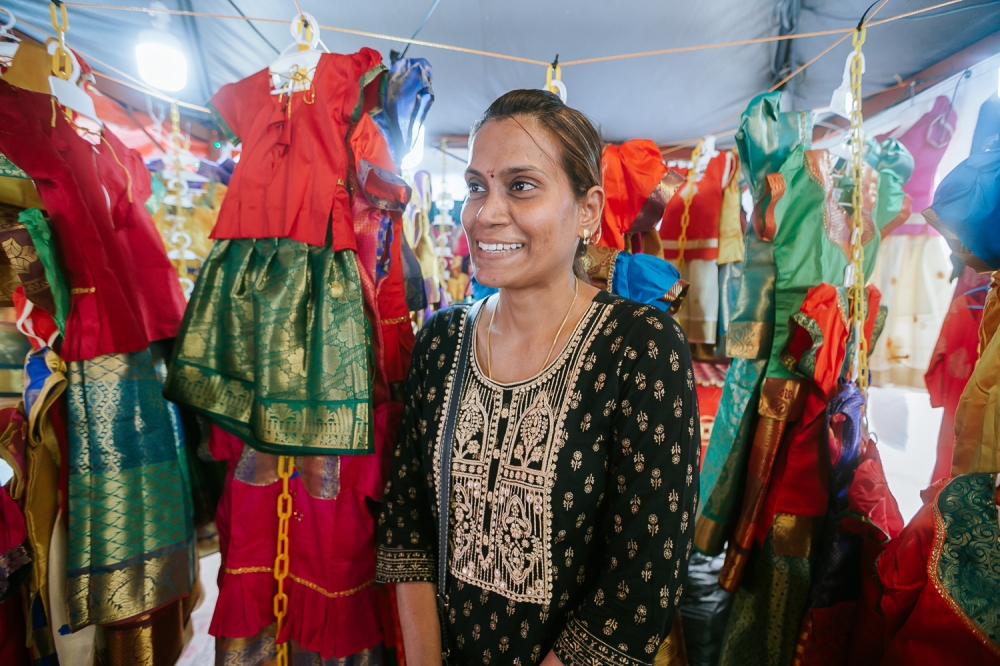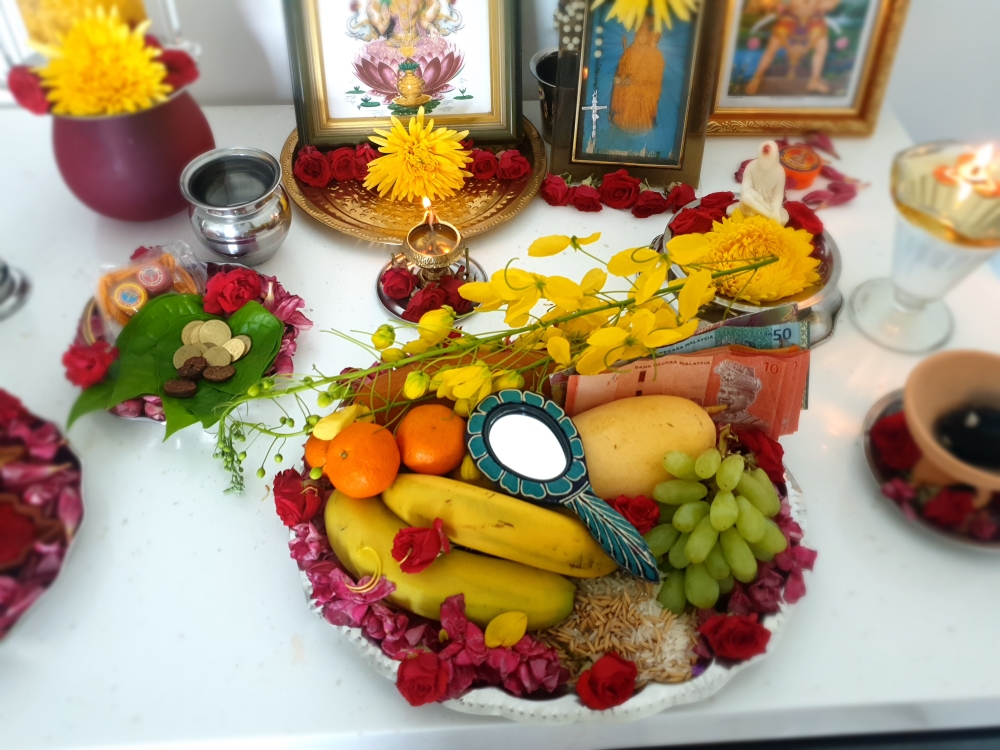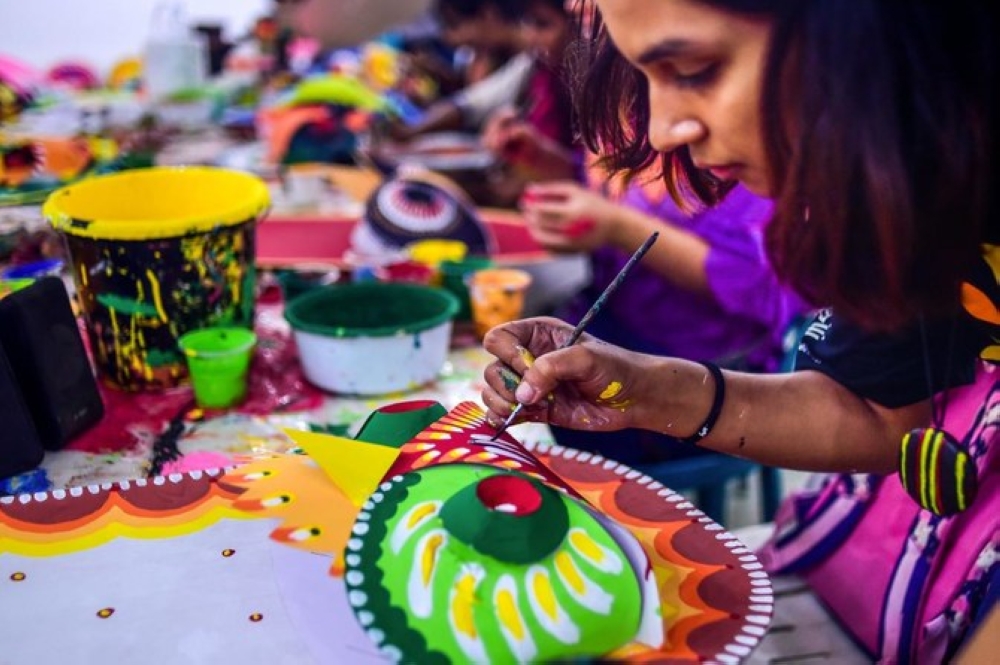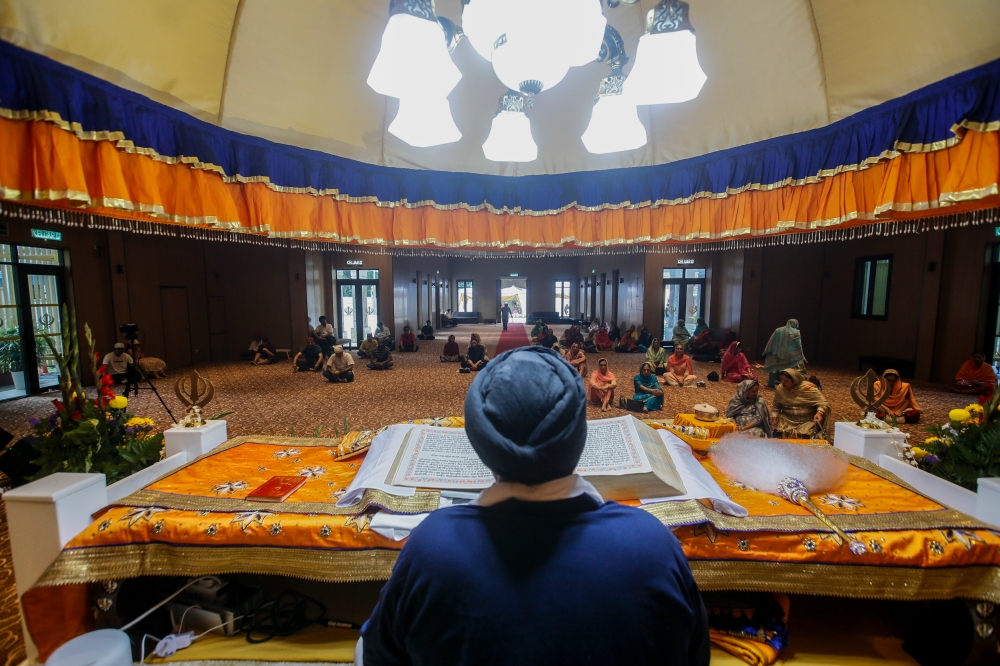KUALA LUMPUR, April 13 — Four major Indian ethnic groups will usher in their respective new years this weekend with cultural fervour and traditional flavours.
On April 13, the Sikh community will celebrate Vaisakhi and on April 14, the Tamil community will usher in the Chittirai Puttandu while the Malayalee and Bengali communities celebrate Vishu and Pohela Boishakh, respectively.
Interestingly, the celebrations also coincide with the spring season in India.
Malay Mail takes a closer look at how these festivals are celebrated over here in Malaysia.
Advertisement

Thanalatchmy Balakrishnan, 40, welcomes the Chittirai Puttandu by observing the sunrise and offering prayers with her family. — Picture by Raymond Manuel
Advertisement
Chittirai Puttandu
Every Chittirai Puttandu, Thanalatchmy Balakrishnan, 40, and her family select an auspicious colour for the traditional costumes that they will wear on the big day.
This Sunday, they will be dressed in the sandalwood colour to ring in the new year.
Thanalatchmy usually begins her new year by observing the sunrise in the morning and getting her three daughters ready for a small prayer session at home before visiting the temple.
“After we return from the temple, I will start preparing an elaborate lunch that includes rice, sambar, pumpkin gravy and mango pachadi, together with snacks and sweets like vadai, payasam, pongal and kesari.
“The ingredients used in the meal represent the six different tastes — sweet, sour, salty, spicy, bitter and astringent — that represent various emotions and experiences in life,” she said.
Thanalatchmy said she will also distribute a portion of the food for the underprivileged to offer her gratitude for the blessings she has received.
Celebrated on the first day of the Chittrai month in the Tamil calendar (panchangam), the Chittirai Puttandu signifies a fresh beginning for new ventures and opportunities.
In Tamil households, fresh mango leaves are tied at the entrance of the homes and kolams are drawn with rice powder.

Renitha said the Vishukkani offered to Lord Krishna is the first thing that one should see on Vishu. — Picture courtesy by Renitha Ramoo
Vishu
The Malayalee New Year, or Vishu, falls on the first day of the Medam month in the traditional Malayalam calendar called Kollavarsham.
A day before the new year, Renitha Ramoo will prepare the Vishukkani — which means “the first sight” in Malayalam — for Lord Krishna at her prayer altar.
The Vishukkani is a tray of offerings that include rice, grains, fruits, old cucumber, yellow konnapoo flowers, gold, money and the val kannadi (mirror with a tail).
“The Vishukkani is the first thing that one should see on the new year for good fortune.
“On the morning of Vishu, the elders in the family will ask the other family members to keep their eyes closed and guide them from the bedroom to the altar.
“At the altar, you should see yourself in the mirror prepared on the Vishukkani and begin your year,” Renitha said.
She said the elders in the family will also distribute kaineetam (monetary gift) and an elaborate meal called the Vishu Sadya is prepared for the household.
Malayalee households also typically decorate the entrance of their homes with a pookalam — a kolam made with only flowers — for Vishu.

A Bangladeshi student of Dhaka University Art Institute paints a mask to sell as a part of Bengali New Year preparations in Dhaka on April 7, 2019. — AFP pic
Pohela Boishakh
The Bengali New Year, or Pohela Boishakh, is celebrated on the first day of the first month of the Bengali calendar (panjika), which is known as Baisakhi.
On this day, the alpona rice floor art adorn the entrances of Bengali homes and prayers are offered to Lord Ganesha and Goddess Lakshmi.
Malaysian Bengalee Association (MBA) immediate past president Swapna Das said the Bengali community starts the day by observing the sunrise and seeking blessings from their elders.
“Traditionally, married women will don new garad saree — a white saree with bright red borders — while men wear white kurtas and dhotis.
“Red signifies prosperity while white represents purity.
“Women also prepare a lavish meal, which includes rice, fish, green chillies, onions and various sweets,” she said.
This year, Swapna is ushering in Pohela Boishakh with a new venture called Roots of Bengal to promote Bengali craft, cuisines and culture.
The Roots of Bengal will debut during the Global Indian Festival at the Mid Valley Exhibition Centre with an array of exciting activities, including a Bengali style saree draping workshop. The exhibition will run from April 10 until April 14.

At Gurdwara Sahib Sentul, the Vaisakhi celebrations begin with a 48-hour recitation of the Sri Guru Granth Sahib — the 1,430-page Sikh holy scripture. — Picture by Hari Anggara
Vaisakhi
Celebrated by Sikhs worldwide, Vaisakhi marks the formation of Khalsa — a Sikh order established by the tenth and last Sikh Guru, Guru Gobind Singh in 1699.
Traditionally, Sikhs initiated into the Khalsa are required to have kesh (uncut hair), kara (steel bangle), kanga (a wooden comb), kachera (cotton underpants) and kirpan (small sword).
The Vaisakhi celebrations begin with the continuous recitation of the Sri Guru Granth Sahib — the 1,430-page Sikh holy scripture — for 48 hours at gurdwaras.
“The Sri Guru Granth Sahib is a living soul to us.
“And, here, we adhere to the same rituals practised at the Golden Temple in Amritsar, Punjab,” Gurdwara Sahib Sentul secretary Harpal Singh said, when met recently.
Starting April 12, the Sikh community will gather at the 112-year-old gurdwara to revel in a three-day celebration.
“We are having a Sikh martial art (gatka) performance on April 13 and there will also be health talks and yoga sessions on April 14,” he said.
On Sunday, the old Nishan Sahib (Sikh religious flag) will also be replaced with a new one and is cleaned with milk and water.
